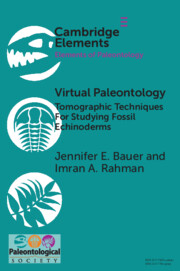Element contents
Virtual Paleontology
Published online by Cambridge University Press: 29 September 2021
Summary
- Type
- Element
- Information
- Series: Elements of PaleontologyOnline ISBN: 9781108881944Publisher: Cambridge University PressPrint publication: 11 November 2021



